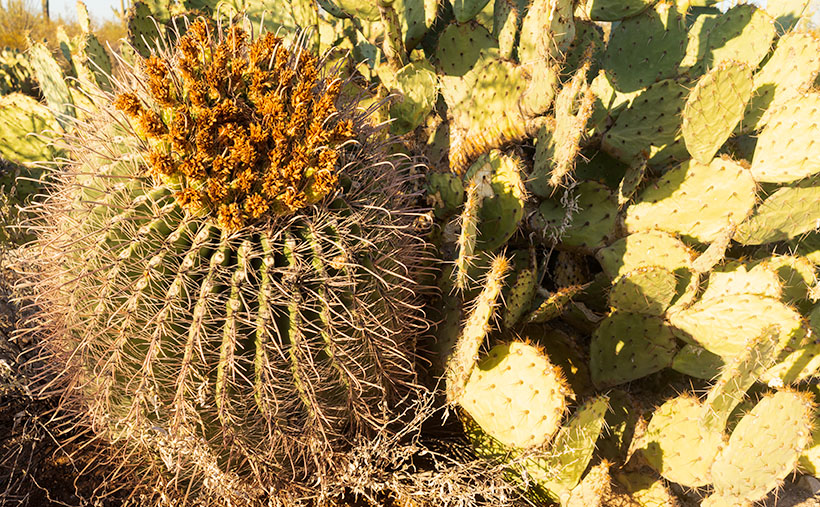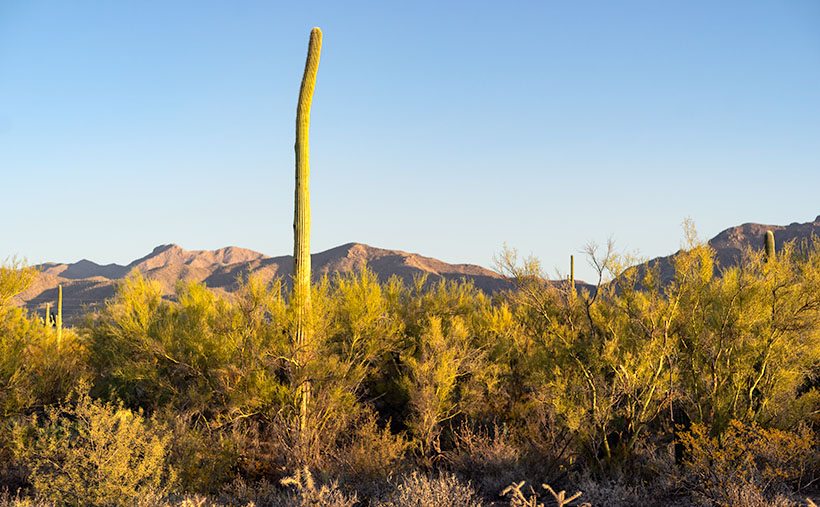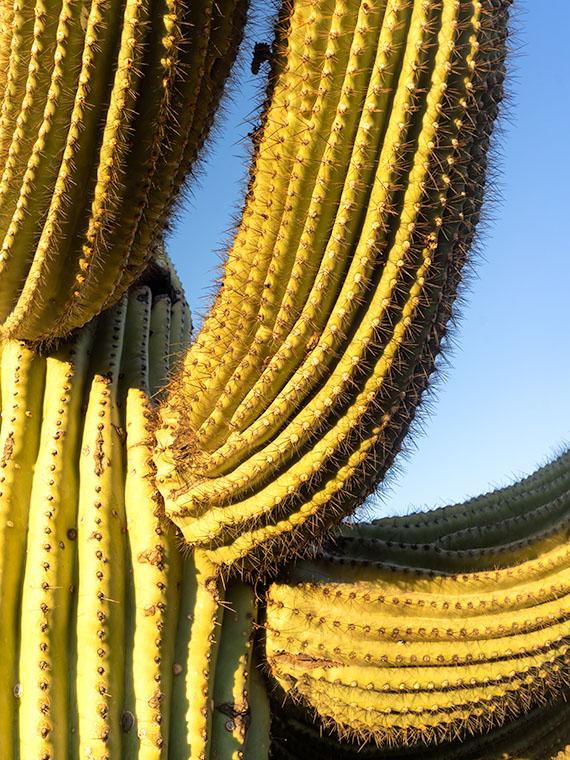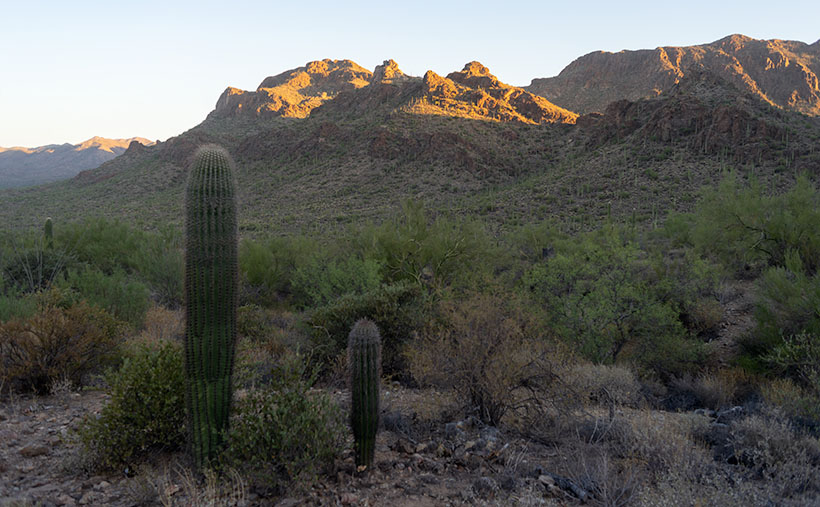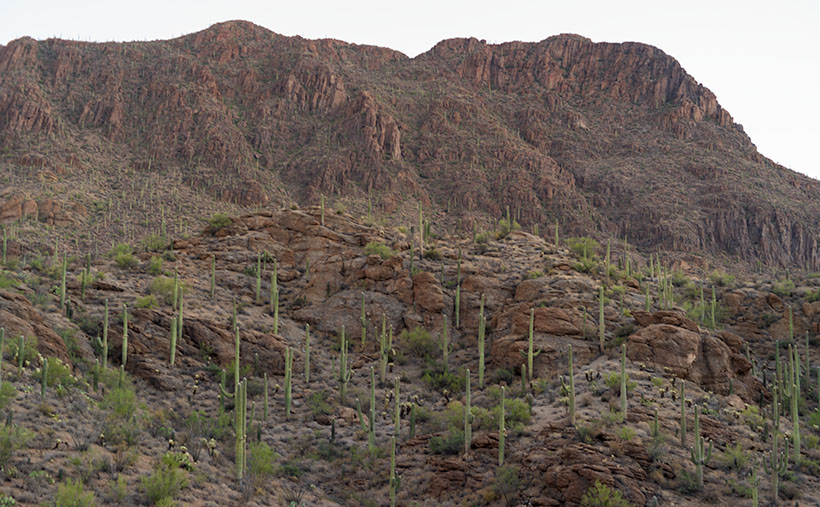We’ve spent March exploring the Black Hills—an interesting group of low mountains on Wickenburg’s north side that gets their name from the dark surface crust on their top. I was able to shoot them from different perspectives by driving the old mine roads that my SUV—Archie—could navigate easily. While I’m out jaunting about and looking for different angles of my subject, I try to keep an eye out for other good scenes—and that’s the case with this week’s featured image.
When I drove out Rincon Road a couple of weeks ago, I intended to get the shot Black Hills—last week’s featured image. While I was there, I discovered a hill covered with saguaro. As I’ve written before, saguaro does well on a south-facing well-drained slope, and when I see a stand like this, it makes me happy. This is a healthy forest. Since I’d already invested the time driving out there, I also took this shot.
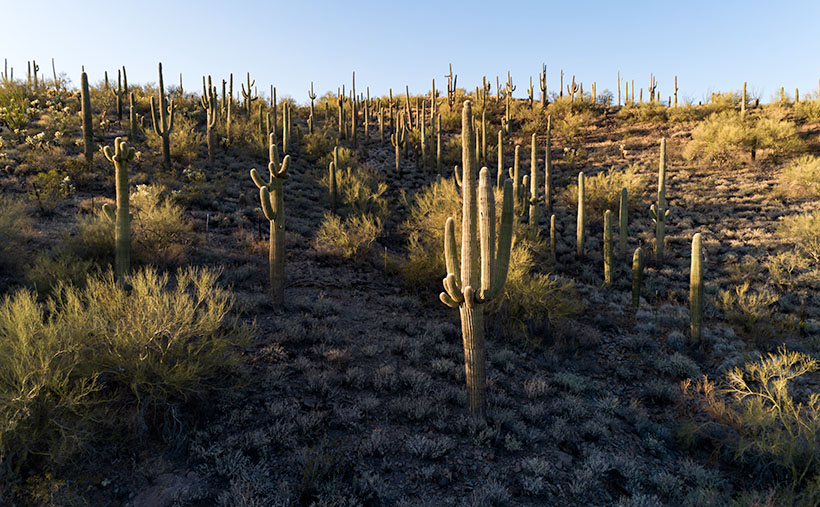
I named this week’s image Saguaro Bouquet jokingly because—although they each weigh a couple of tons—it looks like you could pick them for a Mother’s Day bouquet (hey, no one said I was normal). Although this grove is small, it’s densely packed along the hillside.
There are some other things I see in the photo. It was still winter when I took it, but the scene will change dramatically as the weather warms next month. For example, the little gray bushes covering the ground are brittlebush. In a couple of weeks, they will sprout yellow daisy-like flowers. Shortly after that, the palo verde trees will start flowering, adding more yellow. Finally, in May, the saguaro will be adorned with large white blossoms. That’s an Arizona Highways kind of picture. If you’d like to see it yourself, ask me, and I’ll give you the map coordinates.
I am happy you took the time to view my new photo. You can see a larger version on its Web Page by clicking here. Be sure to come back next week for a complete change of pace. I promise that for April, there won’t be a single saguaro.
Until next time — jw

